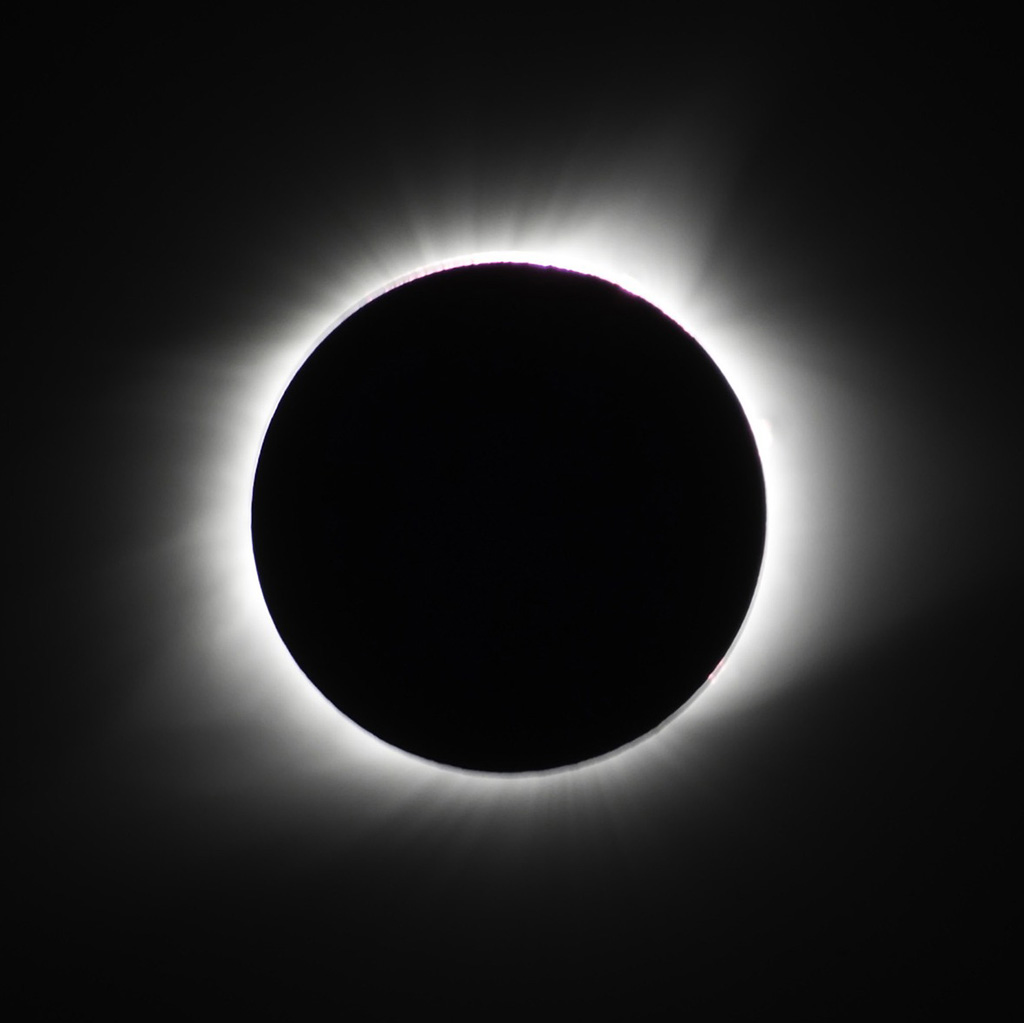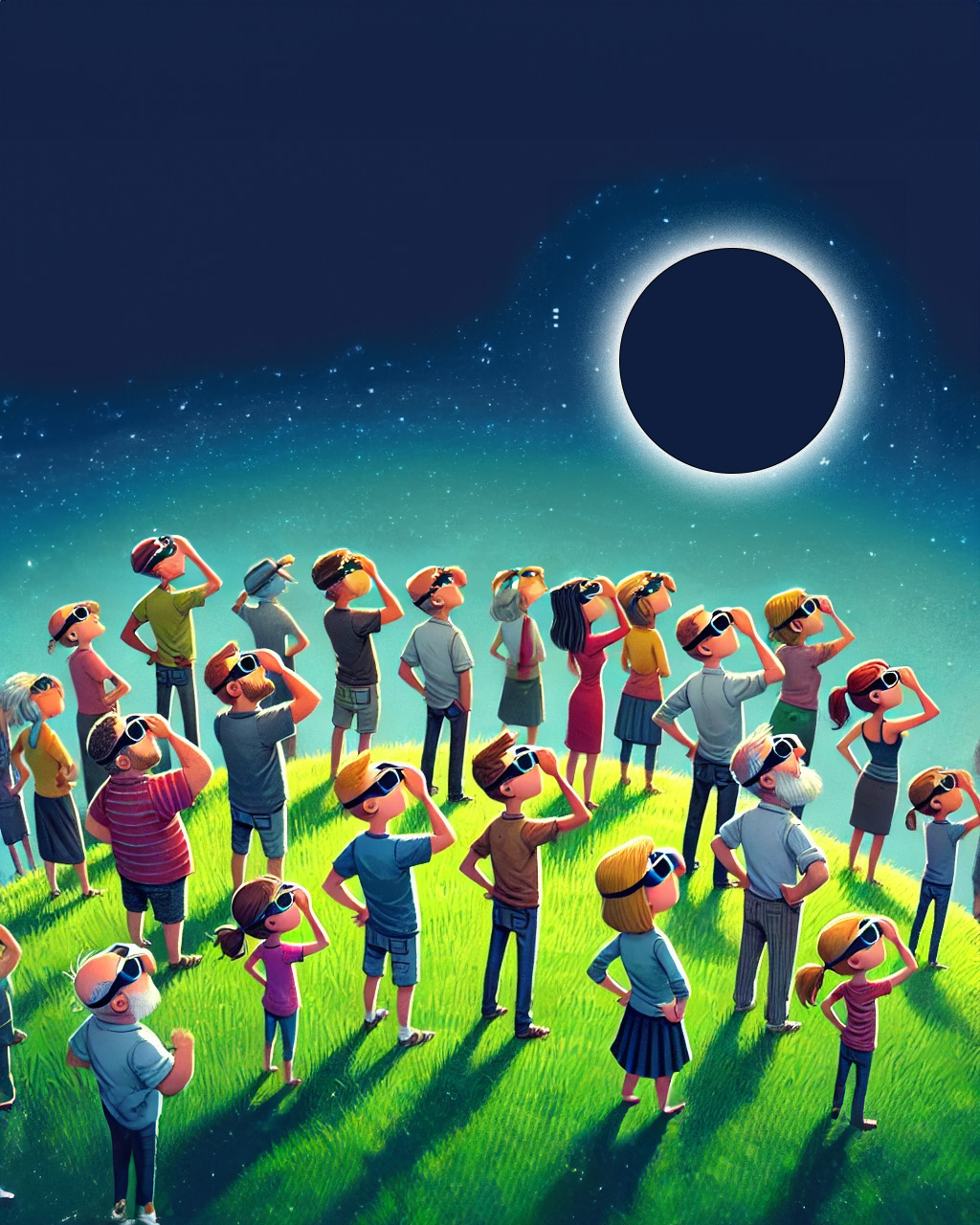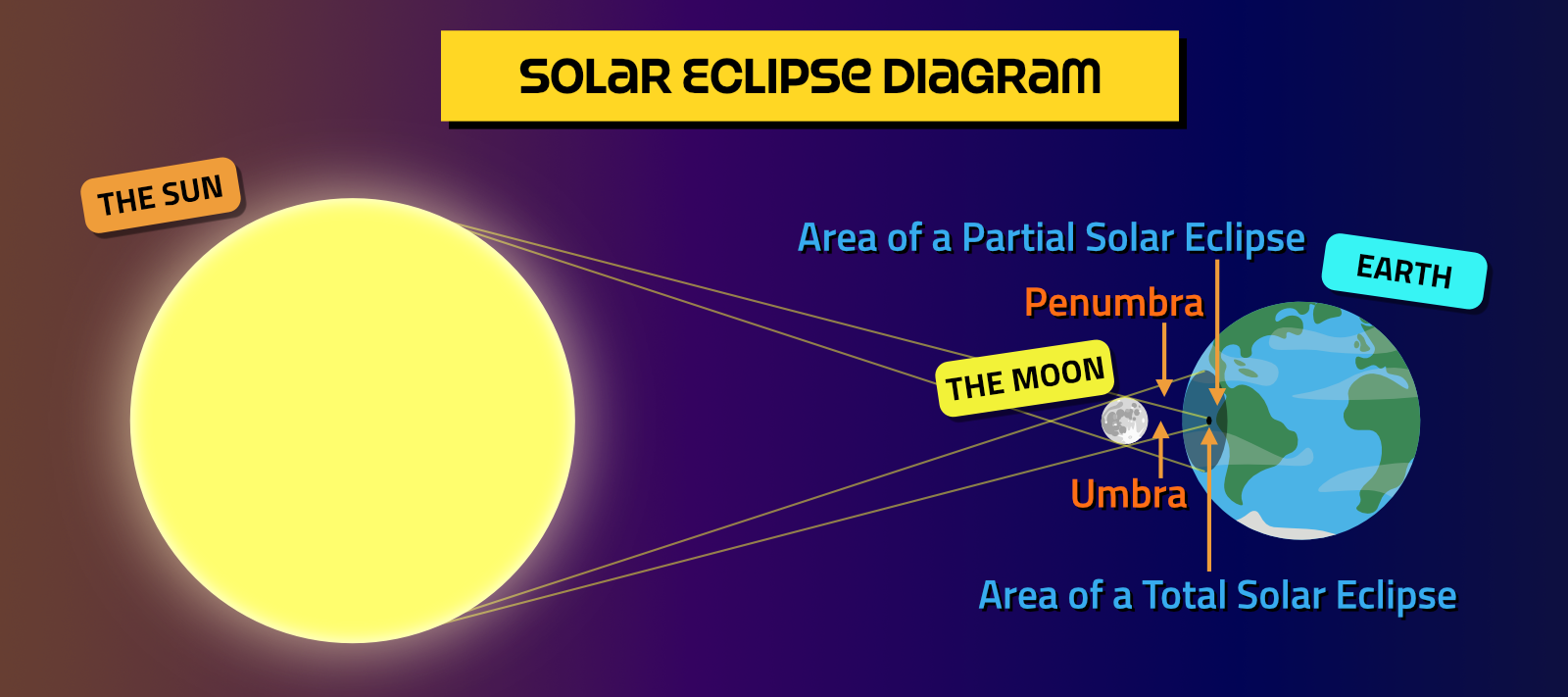Solar Eclipses
A solar eclipse occurs when the Moon moves between the Earth and the Sun, blocking some or all of the Sun's light. There are two main types of solar eclipses: partial and total.
- Partial Eclipse: The Moon covers only a part of the Sun, creating a slight darkening of the sky.
- Total Eclipse: The Moon completely covers the Sun, turning day into night for a few minutes and creating a stunning view.

Solar eclipses are relatively common, with total eclipses occurring about six times every ten years. However, they are not easy to view because each one is only visible from specific places on Earth and for a short period of time, usually only a few minutes.
A total eclipse in 2023 was seen in parts of Australia, while two in both 2020 and 2019 could be seen in Argentina and Chile. One eclipse, known as the "Great American Eclipse" was visible coast to coast in the USA in August 2017. An eclipse in July 2009 could be seen in parts of India and China, and is notable for being the longest total solar eclipse of the 21st century, with totality lasting up to 6 minutes and 39 seconds in some locations. The last time an eclipse could be seen in Europe was in August 1999. This was visible in countries such as the United Kingdom, France, Germany, Austria, and several more.
Partial eclipses occur much more frequently with between two to five eclipses each year being visible from somewhere on Earth.

Solar eclipses are caused by the movements of Earth and Moon. Earth orbits the Sun, and the Moon orbits Earth. About once a month, the Moon passes between Earth and the Sun, which can cause an eclipse if they align perfectly.
Through a unique coincidence, the Moon is 400 times smaller than the Sun, but is also 400 time closer to Earth than the Sun is. This means that, when seen from Earth, the two objects appear to be the same size as each other. When a total eclipse happens, the Moon is able to cover the entire visible disk of the Sun.

Viewing a Solar Eclipse
During a partial eclipse, the sky may darken slightly, and the Moon can be seen covering part of the Sun. Never look directly at the Sun without special eclipse glasses or by using safe methods like projecting the Sun's image onto a surface.
During a total eclipse, the sky darkens significantly, and the Sun’s outer atmosphere, the corona, becomes visible. This moment, known as totality, usually lasts between five to seven minutes. You might also see phenomena like Baily's Beads, which are small beads of light shining through gaps between mountains and ridges on the Moon's surface. There is also the Diamond Ring Effect, which occurs when the Sun emerges from behind the Moon and its first light bursts out.
A total solar eclipse in a specific area usually lasts for just a few minutes. The period when the Sun is completely covered by the Moon, which is known as totality, can last from a few seconds to around 7 minutes and 30 seconds. Most total eclipses last between 2 to 4 minutes.
The exact duration of an eclipse is affected by several factors, including:
- Eclipse's Path: The eclipse lasts longer near the center of its path and shorter near the edges.
- Earth’s Rotation: The rotation of the Earth affects how fast the shadow moves across the surface, impacting the duration.
- Position on Earth: Eclipses near the equator tend to last longer due to the Earth's shape
- Moon's Distance: When the Moon is closer to Earth, totality can last longer.
In most cases, the total phase of the eclipse is brief, making it a rare and spectacular event to witness.
Predicting Eclipses
Astronomers can predict the exact time and place of solar eclipses, and the path an eclipse will take as it moves across Earth's surface as the planet spins. This makes it possible for dedicated eclipse watchers to travel and witness these events. Dates and locations of past and future eclipses can be found on NASA's Eclipse page.





